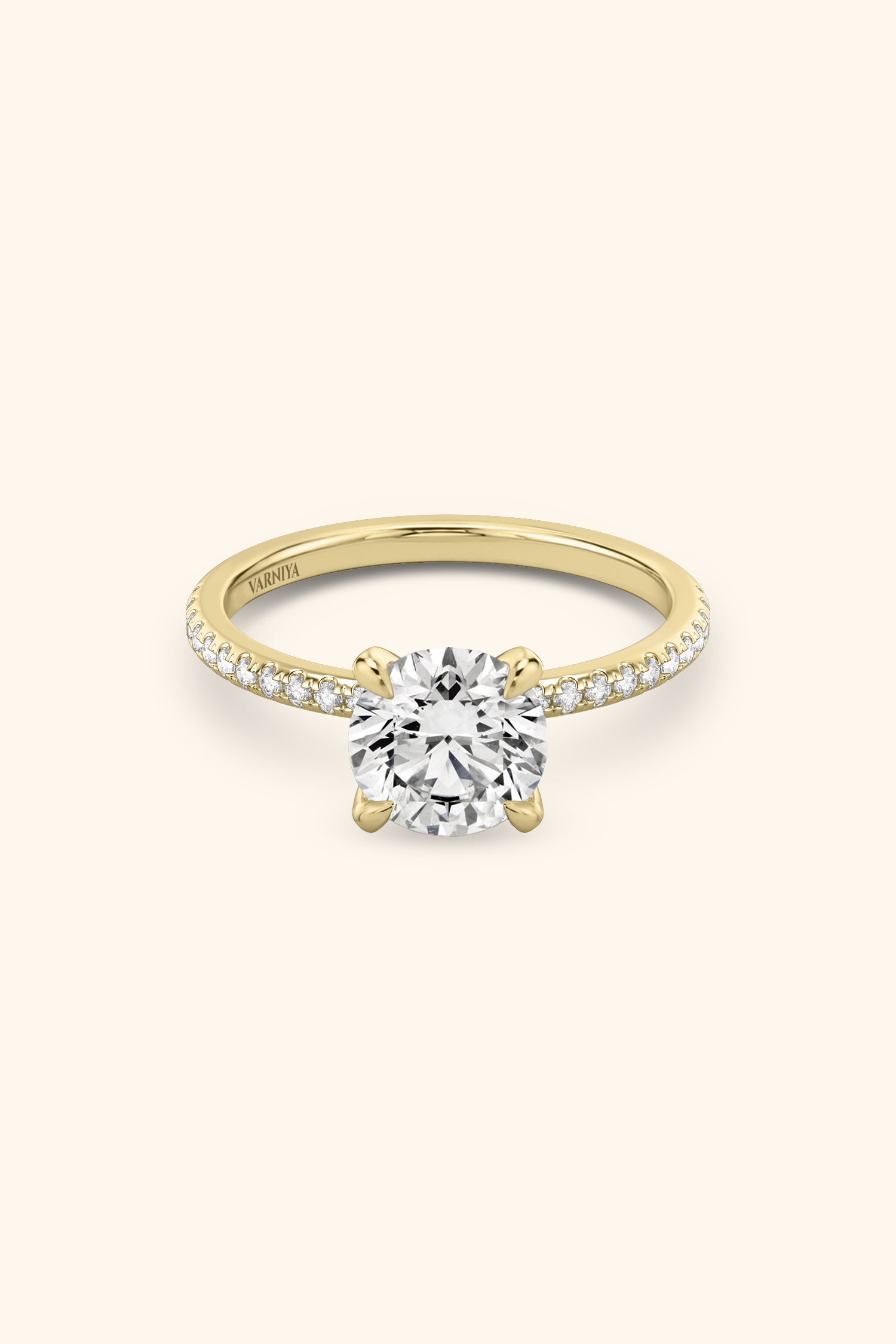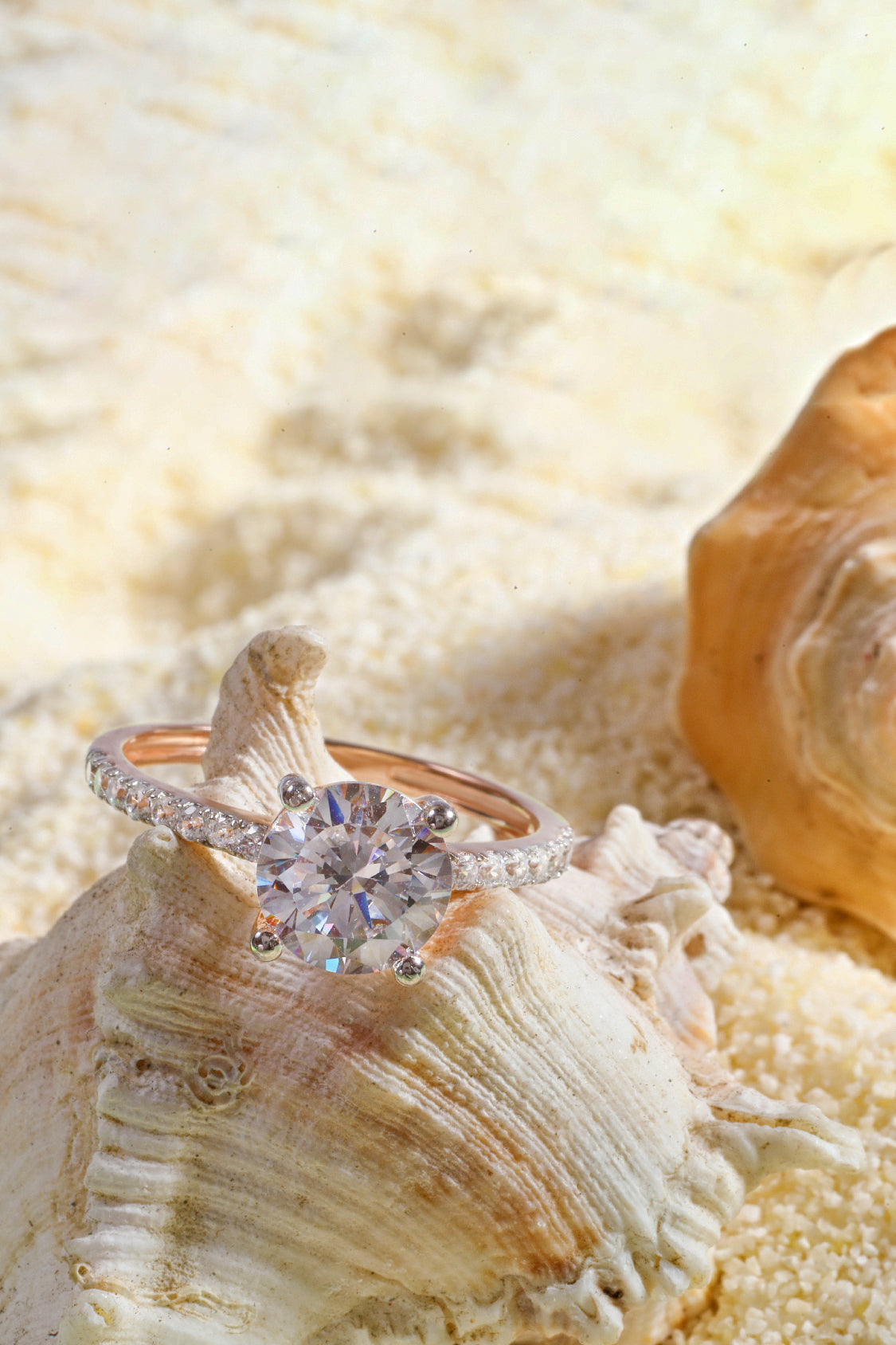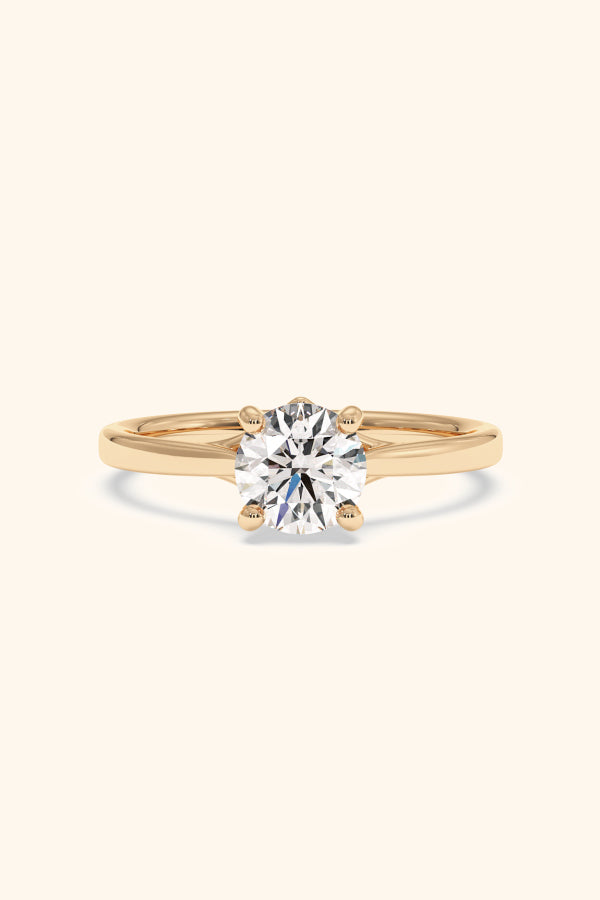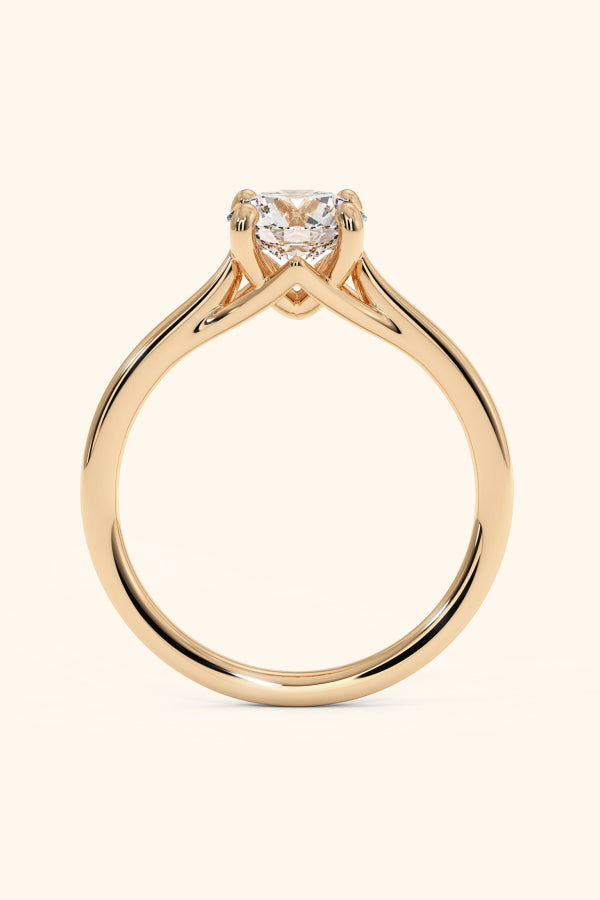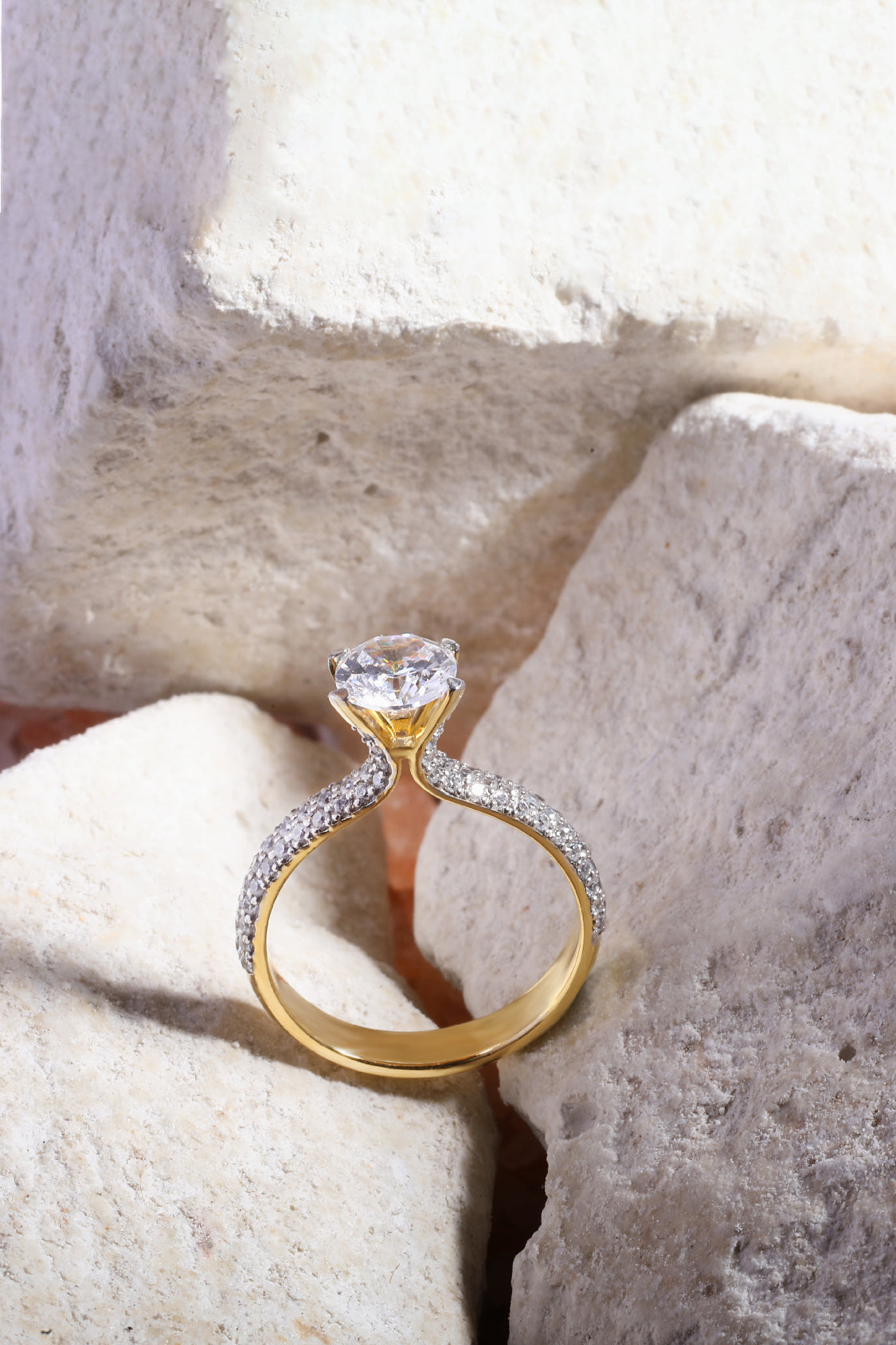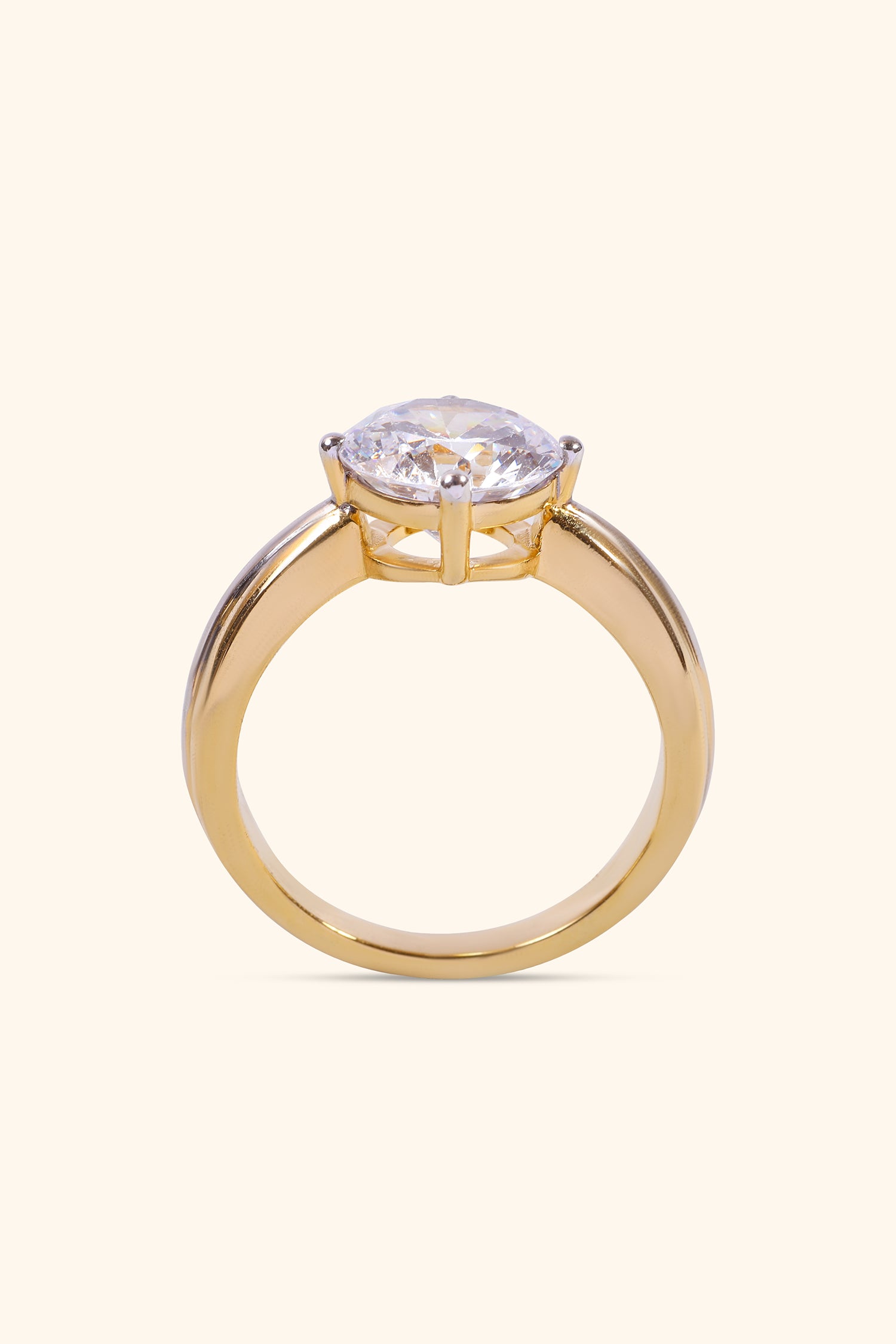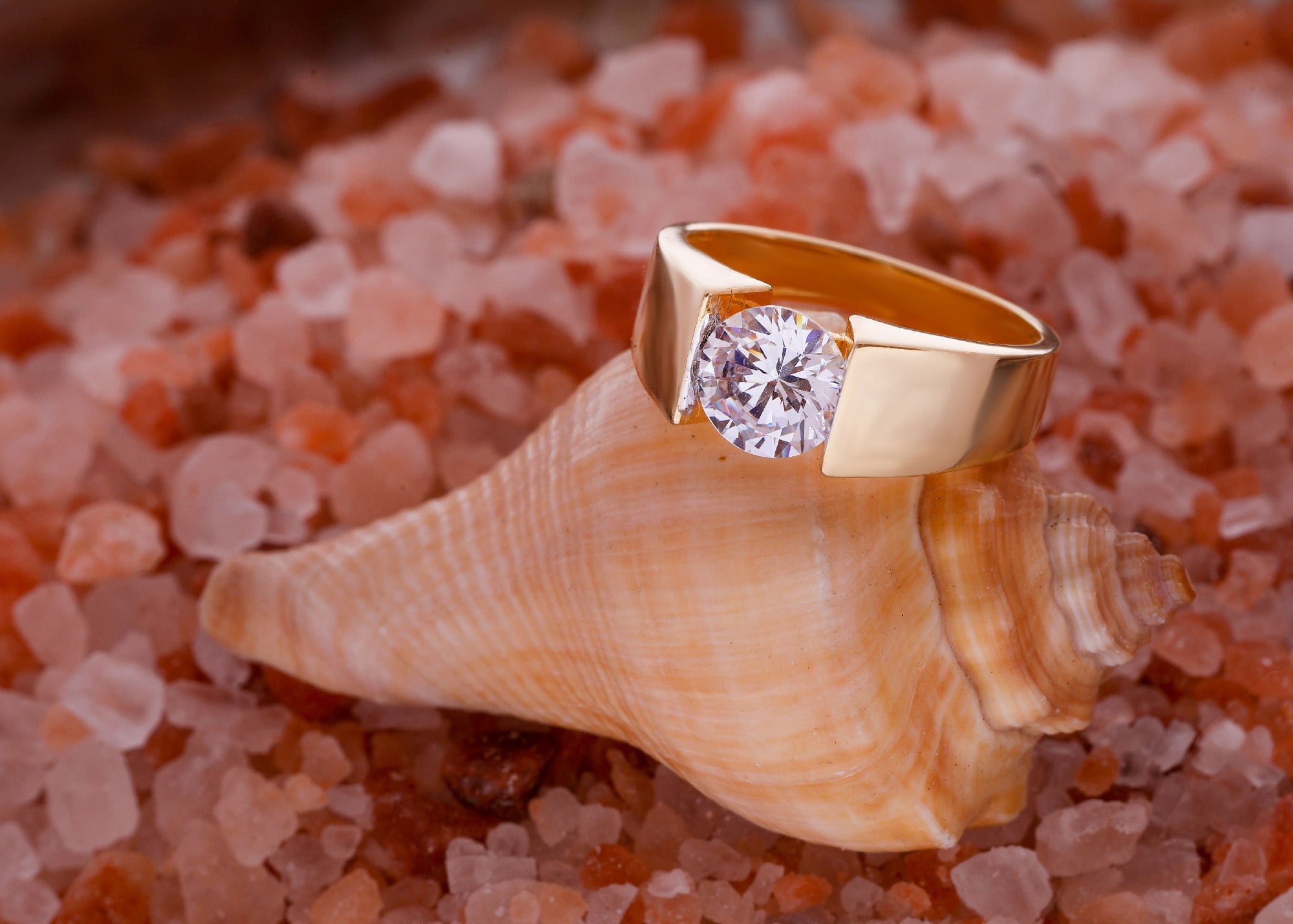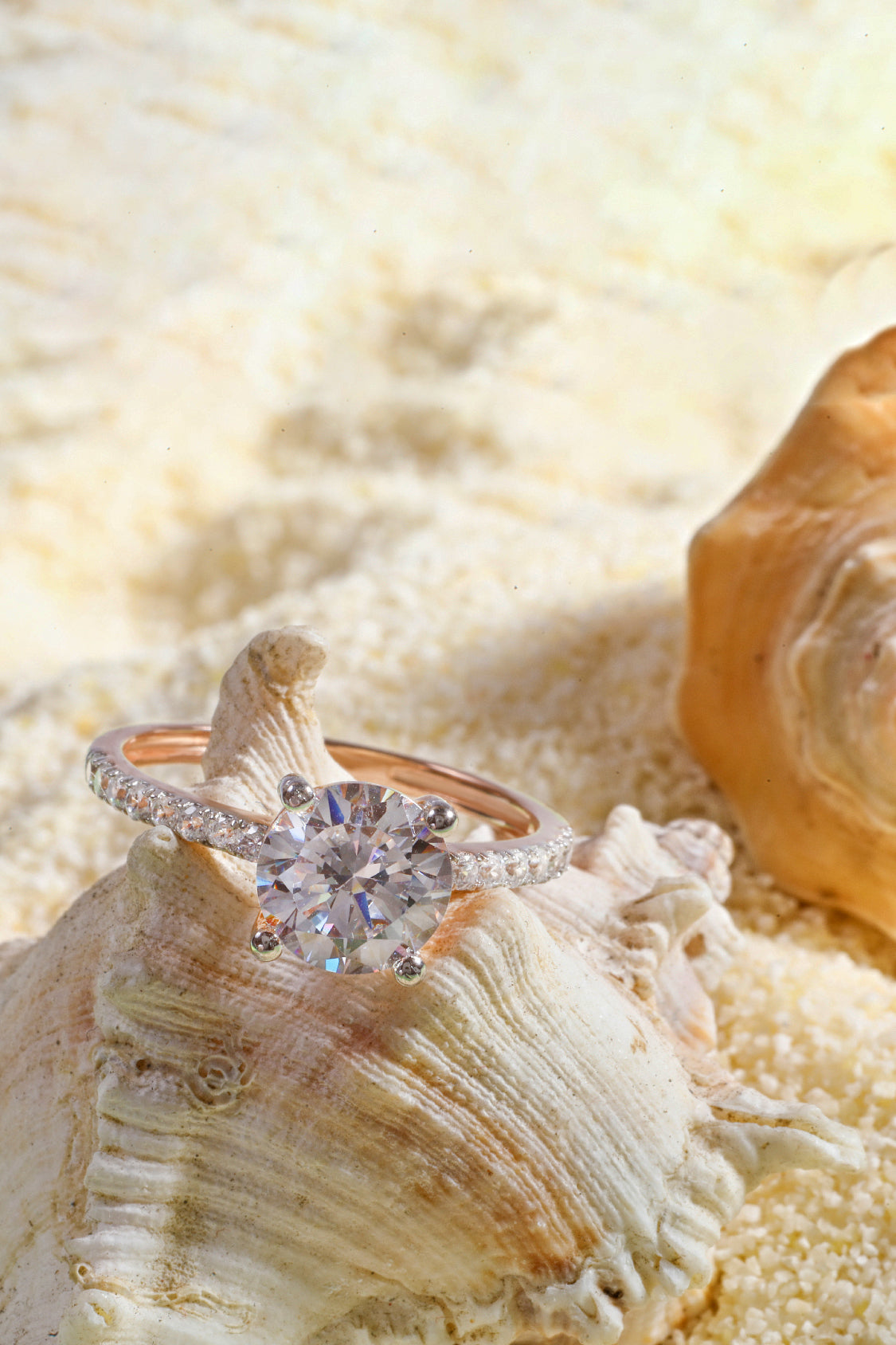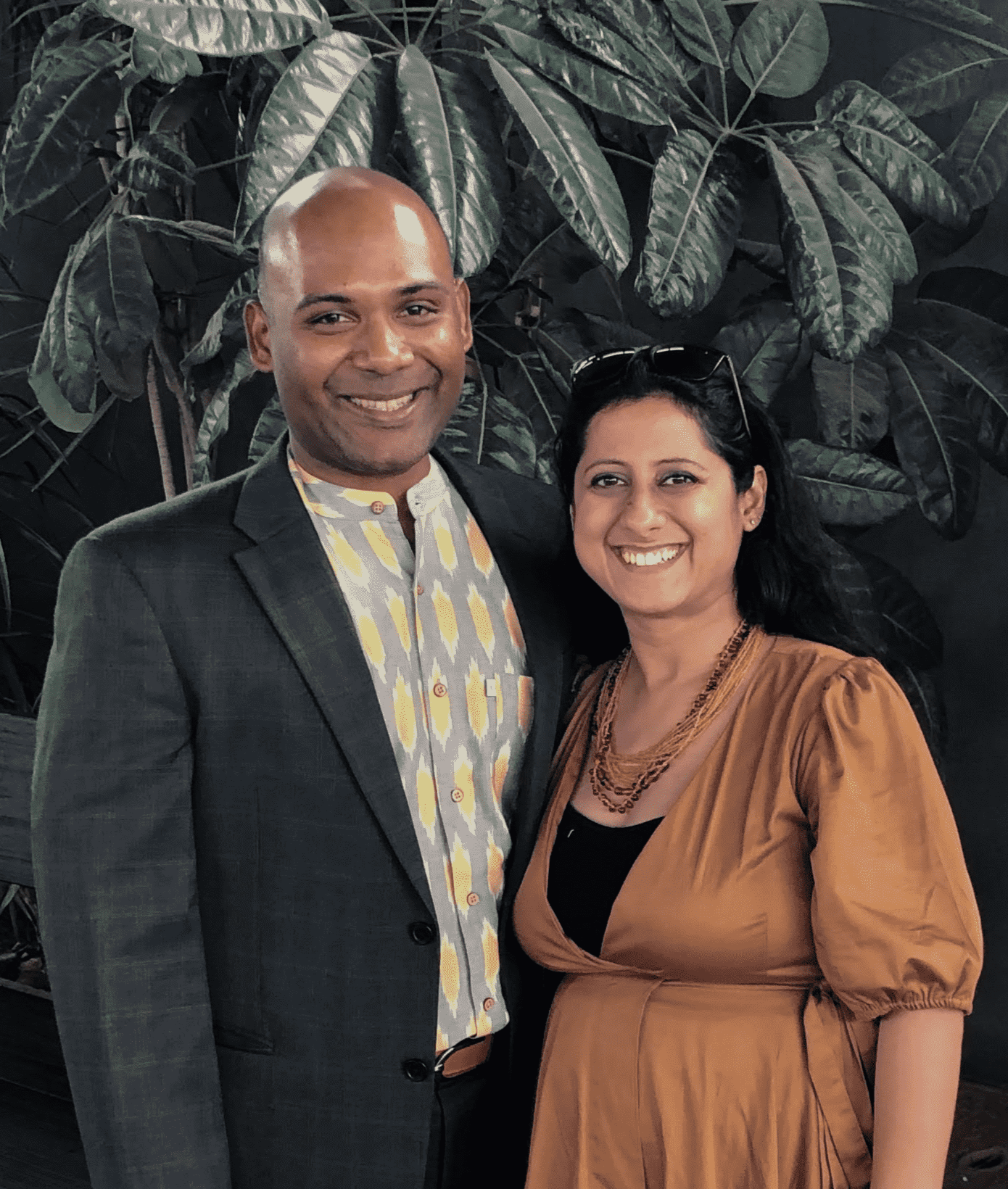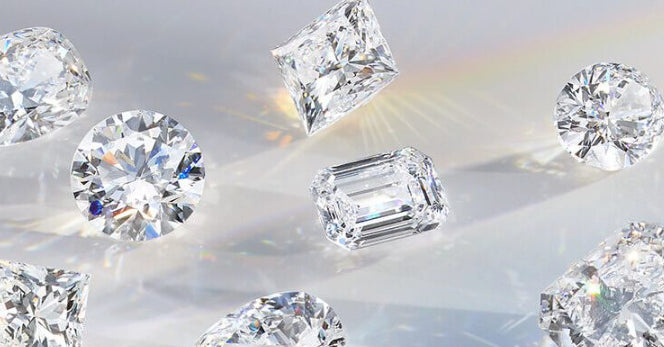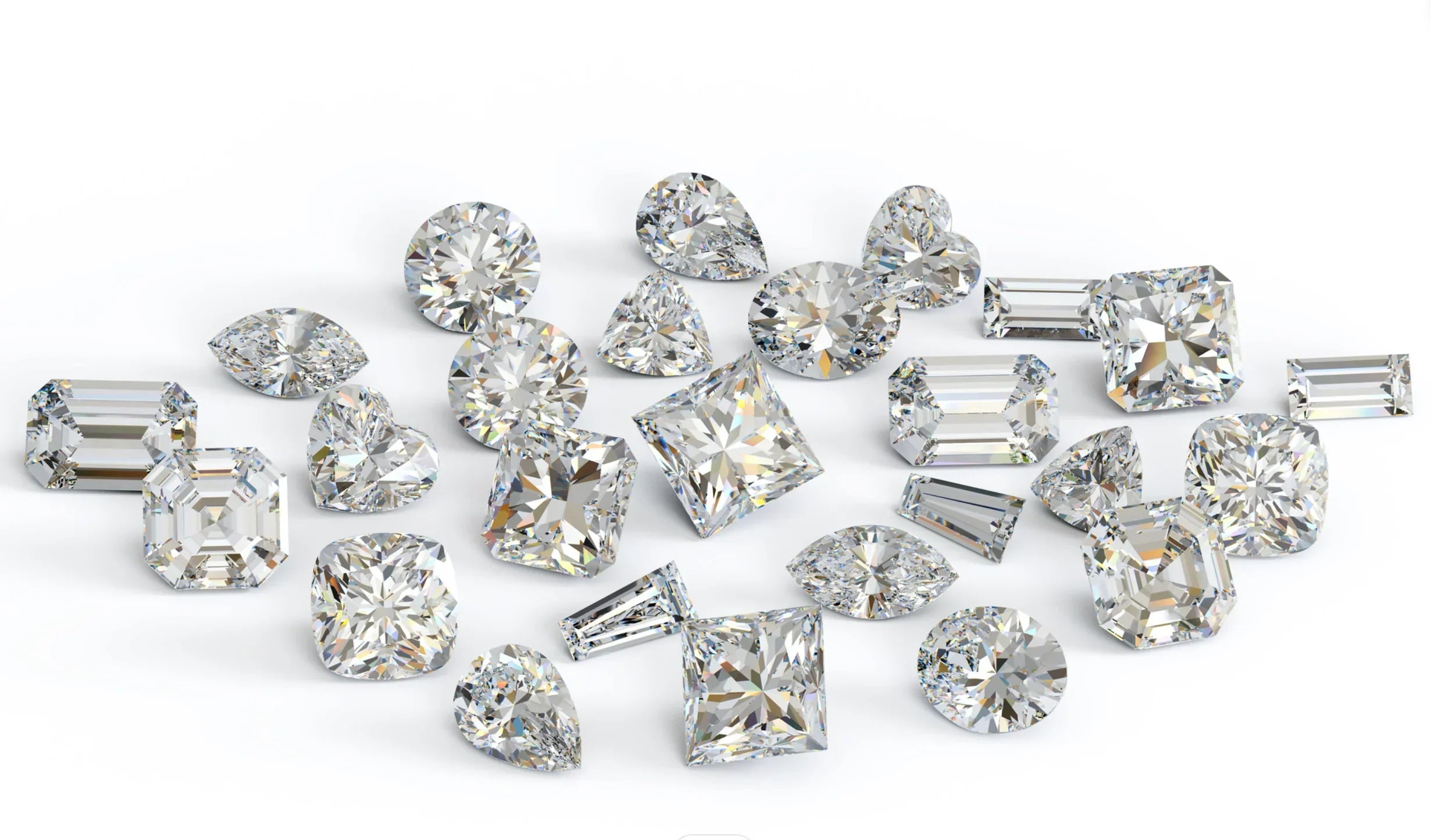
Should You Buy Lab-Grown Diamonds or Real Ones? A Brutally Honest Comparison
Should You Buy Lab-Grown Diamonds or real diamonds? Get expert insights into pros, cons, and key buying tips you won’t hear in a jewelry store.
You're about to make a big decision—should you buy lab-grown diamonds or stick with natural diamonds? You're not alone—nearly 70% of millennials now consider lab-created diamonds for engagement rings, according to a recent survey by The Knot.
But with so many opinions and confusing terms thrown around, how do you choose what's right for you? Don't worry—I've got you covered!
Together, we'll dive into a brutally honest comparison, unpacking everything from price differences and ethical considerations to the real truth about resale value. Let's cut through the sparkle and find the best diamond for you!
Lab-Grown Diamonds vs Real Diamonds: Why the Debate Matters
1. Same Sparkle, Different Story
Lab-grown diamonds and natural diamonds look the same. Both have the same sparkle, shine, and strength. In fact, they have the same chemical composition and optical properties.
They are indistinguishable from natural diamonds without specialized equipment. However, natural diamonds have tiny amounts of nitrogen, while lab-grown diamonds have none.
So, what’s the only difference? The origin. Natural diamonds come from deep under the earth’s mantle. Lab diamonds are made using machines in a lab setting. Natural diamonds are mined, cut, and polished after their formation.
The result? You get a real diamond—just made in a different way. As the Federal Trade Commission confirms, lab-grown diamonds are 100% real.
2. The Ethical Edge
Many people now choose lab grown diamonds because they avoid conflict diamonds (diamonds mined in war zones).
Lab-grown stones are better for the planet. They produce less carbon emissions and reduce environmental impact. That’s a win for ethics and the environment. However, lab-grown diamond manufacturing processes can lead to sustainability issues due to energy demands.
If you want a ring with a story you feel good about, lab is a good alternative. The Kimberley Process, established in 2003, also aims to prevent the flow of conflict diamonds, addressing ethical concerns in the diamond industry.
3. Resale Value: The Reality Check
Here's a reality check: natural diamonds usually have higher resale value. Lab-created diamonds lose more of their price because they're easier to make. Natural diamonds hold their value better due to their finite supply. If resale value matters to you, keep this in mind.
However, remember the price difference initially can make lab-grown diamonds a cost-effective choice. That said, diamonds are not a smart long-term investment for the average consumer.
4. Science vs. Nature
Lab diamonds use two processes: HPHT (High Pressure High Temperature) and Chemical Vapor Deposition (CVD). These mimic how real diamonds form in the Earth's crust but in a shorter time. Natural diamonds, on the other hand, are created under the immense pressure of Earth's crust over billions of years.
Both processes use specialist equipment and require less energy than mining natural diamonds from the Earth's mantle.
5. Which Is More “Real” Emotionally?
Emotionally, some feel natural stones carry special meaning because of their rare nature. Others find lab-grown diamonds just as meaningful.
Ultimately, a diamond ring's emotional value comes from personal feelings and memories attached to it, not its origin, despite both stones having the same properties. Natural diamonds also have a long-standing tradition and consumer comfort associated with their purchase.
6. What the Future Holds
What does the future hold? The diamond market is changing fast. Lab diamonds are gaining popularity. Experts predict lab-grown diamonds could soon take over half the market. Why? The market for diamond engagement rings is increasingly focusing on lab-grown diamonds due to affordability.
The diamond industry is adapting quickly as lab-grown options take a bigger share of consumer interest. They're environmentally friendly, cost-effective, and just as beautiful. Whether you pick lab grown or natural diamonds, knowing the facts helps you make the best choice.
How Are Lab-Created Diamonds Made?
1. HPHT Diamonds
HPHT stands for High Pressure High Temperature. This method tries to copy how diamonds form in the earth's mantle.
Here’s what happens:
-
A tiny diamond seed is placed inside a special lab setting.
-
It’s heated to over 1,300°C and squeezed under extreme pressure.
-
Carbon melts around the seed and slowly forms a new lab grown diamond.
This process needs specialist equipment and a ton of energy. According to the Federal Trade Commission, HPHT diamonds are real and can be sold just like mined ones—if labeled clearly.
👍 Fun fact: HPHT can also improve a diamond’s clarity by removing internal marks.
2. Chemical Vapor Deposition (CVD)
CVD is a newer method. It sounds complex, but it’s pretty cool.
-
A diamond seed is placed in a vacuum chamber.
-
The chamber is filled with gases like methane.
-
When heated, carbon atoms break apart and land on the seed.
-
Bit by bit, they form a new lab grown diamond layer by layer.
CVD diamonds are cost effective, need less energy, and offer more control over shape and size.
Lab-Grown Diamonds vs Natural Diamonds: What’s the Difference?
| Aspect | 🌱 Lab-Grown Diamonds | 🌎 Natural Diamonds |
|---|---|---|
| Origin | Made in labs using technology like HPHT or CVD within a few months. | Formed deep in the Earth’s mantle over billions of years through natural processes. |
| Price | Usually 40–60% cheaper for the same size, quality, and clarity. | Typically more expensive due to rarity and costly mining. |
| Ethics & Environment | Ethical alternative; lower carbon emissions and minimal environmental harm. | Can involve unethical mining practices and significant environmental disruption. |
| Resale Value | Lower resale value; depreciates quickly as production technology advances. | Generally holds better resale value due to natural rarity. |
| Chemical Composition | 100% real diamonds; chemically identical to natural diamonds (pure carbon). | 100% real diamonds; chemically identical to lab-grown diamonds (pure carbon). |
| Emotional Value | Perceived by some as less special or romantic because they're man-made. | Often considered more special and romantic due to their natural origin and rarity. |
| Certification | Certified by IGI, GIA, and other reputable gem labs, clearly labeled as "lab-grown." | Certified by IGI, GIA, and other reputable gem labs as natural diamonds. |
| Customization & Availability | Greater control over size, color, clarity, and availability; quickly customizable. | Limited by natural occurrences; rare colors and sizes command very high prices. |
| Durability | Scores a perfect 10 on the Mohs scale; equally hard and durable. | Also scores a perfect 10 on the Mohs scale; equally hard and durable. |
| Market Trend | Growing rapidly in popularity, especially among younger buyers. | Long-established market; facing increased competition from lab-grown options. |
Price & Value: Lab-Grown Diamonds Offer Better Deals?
What’s the Price Difference?
Lab grown diamonds cost a lot less than natural diamonds. In fact, according to data from Rapaport, lab diamonds can be 40% to 60% cheaper for the same carat weight and clarity. Why?
Because they’re made in a lab setting using specialist equipment, not dug up from the earth’s crust. This also means you can purchase larger lab grown diamonds compared to natural diamonds for the same price.
For example, a 1-carat natural diamond might cost $6,000, while a lab created diamond of the same size and clarity could be around $2,500.
If you’re working with a budget or want a larger stone for less, lab grown diamonds offer a cost-effective solution.
Are They Still "Real" Diamonds?
Yes. They have the same chemical composition, optical properties, and sparkle as diamonds mined from the earth’s mantle. This makes lab grown diamonds real. The Federal Trade Commission even updated its guidelines in 2018 to call them diamonds.
So, if someone says lab-grown diamonds aren’t “real diamonds,” that’s the wrong answer.
Durability, Quality & Certification: Lab Diamonds Are Real
Are They Just as Strong?
Yes. Lab diamonds are just as strong as the ones that come from the earth. They score 10 on the Mohs scale of hardness, just like natural diamonds. This means they are scratch-proof and super tough. You can wear your diamond ring every day without worry.
A gem expert from GIA (Gemological Institute of America) said, “Lab diamonds and mined diamonds have the same durability and optical properties.”
That’s straight from the source!
What About Quality?
Lab created diamonds go through strict quality checks. They are graded using the same 4Cs: cut, color, clarity, and carat weight. This is how labs test diamonds, just like they do with natural ones.
Some even say lab diamonds offer better value for clarity and size at the same price. The Gemological Institute of America (GIA) has been grading laboratory-grown diamonds since 2007.
And guess what? You can get high clarity diamonds without paying a premium. Plus, you know where they come from—no mining, no secrets.
Do Lab Diamonds Come with Certification?
Yes! All certified lab grown diamonds come with grading reports from trusted labs like IGI or GIA. These reports mention if the diamond was grown using the HPHT or CVD method. They also include details like chemical properties and whether it’s grown in a lab setting.
This helps you trust what you’re buying. And it makes resale easier too. According to Clean Origin, “Certified lab grown diamonds now have similar resale value trends as mined diamonds—especially for larger stones.”
Why Lab Diamonds Are Perfect for Engagement Rings
Are They the Same as Natural Stones in a Diamond Ring?
Thinking of getting engaged and wondering—should you buy lab grown diamonds instead of natural ones? You're not alone. A lot of couples today are making that choice—and for good reason.
-
Let’s clear this up first. Lab-grown diamonds are real diamonds. They are made of the same chemical composition as natural diamonds: pure carbon. They also have the same optical properties.
-
That means they look the same to the naked eye—same sparkle, same shine, same cut. You can’t tell the difference unless you're using specialist equipment. Lab-grown diamonds also possess the same inclusions as natural diamonds.
So yes, they are the same as natural stones in a diamond ring—just made in a lab, not under the earth’s crust over millions of years.
Experts Say: Lab-grown diamonds are chemically, physically and optically identical to mined diamonds." — Federal Trade Commission (FTC)
-
Still worried about quality? Don’t be. Lab grown diamonds are graded by the same industry standards—cut, color, carat weight, and clarity. You can even get certification from places like GIA or IGI, just like with natural diamonds.
-
Another plus? Lab diamonds are a good alternative if you care about the environmental impact of your purchase. Unlike mined diamonds, they don’t require digging up huge parts of the earth's mantle or disturbing ecosystems.
Buying a Lab-Grown Diamond Engagement Ring from Varniya: A Premium Choice
Choosing a lab-grown diamond engagement ring from Varniya offers a blend of luxury, sustainability, and value. Varniya's commitment to quality and ethical practices makes it a standout choice for discerning customers.
Key Benefits:
-
Exceptional Craftsmanship: Varniya's rings are meticulously designed, ensuring each piece meets high standards of brilliance and durability.
-
Sustainable Choice: Lab-grown diamonds provide an eco-friendly alternative to mined diamonds, reducing environmental impact.
-
Cost-Effective: These diamonds typically cost 30-40% less than their mined counterparts, offering better value without compromising on quality.
-
Customization Options: Varniya offers a range of designs, allowing you to select a ring that perfectly aligns with your personal style.
-
Ethical Assurance: All diamonds are conflict-free, ensuring your purchase supports responsible practices.
Diverse Collection:
Varniya's collection includes various styles to cater to different preferences:
-
Classic Solitaire Rings: Timeless designs that highlight the diamond's brilliance.
-
Halo Rings: Featuring a central diamond surrounded by smaller stones for added sparkle.
-
Three-Stone Rings: Symbolizing the past, present, and future of your relationship.
-
Pavé Rings: Bands adorned with small diamonds for continuous shimmer.
Each ring is crafted with precision, reflecting Varniya's dedication to excellence.
Cubic Zirconia vs Lab Diamonds: Not the Same Thing
| Feature | 💎 Cubic Zirconia (Hover to learn more) |
🔬 Lab Diamonds (Hover to learn more) |
|---|---|---|
| Composition | 🧪 Synthetic (Zirconium Dioxide) | 💠 Pure Carbon (Same as Natural Diamond) |
| Appearance | ✨ Extra Sparkly (Sometimes Fake-Looking) | 🔆 Identical to Real Diamonds |
| Durability (Mohs Scale) | ⚠️ Softer (8.5) | 💪 Very Hard (10) |
| Clarity & Quality | 🔍 Clear at First, May Cloud | 🔎 High Clarity, Long-Lasting |
| Price Point | 💲 Budget-Friendly | 💸 30–40% Cheaper Than Mined |
| Resale Value | 🚫 No Resale Value | 💰 Retains Value |
| Longevity | ⌛ Short-Term Shine | 🕰️ Heirloom-Worthy |
| Environmental Impact | 🌍 Low, but Not Natural | ♻️ Sustainable Alternative |
| Emotional Value | 🎭 Low Emotional Value | 💖 High Emotional Worth |
| Best For | 👗 Costume or Trend Jewelry | 💍 Engagement Rings & Gifts |
Pros & Cons of Lab-Created Diamonds
Pros of Lab-Created Diamonds
1. Way More Affordable
One big reason many people choose lab-created diamonds is the price difference. Lab-grown diamonds can cost around 30% to 60% less than natural diamonds. Why? Because they don't come from mines deep within Earth's crust or Earth's mantle.
Instead, these diamonds are grown in a lab setting. This means you get the same sparkle, carat weight, and clarity without spending as much money. So, should you buy lab grown diamonds? If saving money matters to you, the answer might be yes
2. Ethically Clean
Natural diamonds are often mined in places where working conditions are unsafe. Some are even called conflict diamonds or blood diamonds if they’re linked to violence or child labor. That’s a serious concern. Choosing mined diamonds can involve ethical concerns related to human rights abuses in mining regions.
Lab-created diamonds, on the other hand, are made in a lab setting using technology. No digging, no dangerous labor, no harm to workers.
They’re also better for the planet. Mining natural diamonds can destroy the earth’s crust and earth’s mantle, leaving behind waste and pollution. Lab-grown diamonds have a smaller carbon footprint, though they still use energy.
3. Identical in Looks & Quality
Here's the truth: lab-grown diamonds and natural diamonds have the same chemical composition. They share the same chemical and optical properties. To the naked eye, no one can tell the difference between the two. Even jewelers need specialist equipment to spot tiny amounts of difference.
The Federal Trade Commission confirms lab-grown diamonds are real diamonds, just made differently. So when choosing your diamond ring, you don't sacrifice quality if you pick lab-created diamonds.
4. More Custom Options
Since labs control the growing process, it’s easier to make diamonds with specific features like color, cut, and clarity. This means you get more choices in your diamond ring without paying more.
You want a pink or blue diamond? That’s possible with lab diamonds. Want a perfect round cut with ideal carat weight? Also doable.
Plus, you avoid the long wait. While a natural diamond can take billions of years to form, lab-grown ones are made in just a few months.
This flexibility makes them a good alternative for engagement rings, especially for people who want something beautiful, personal, and quick to buy. Online retailers offer customization options for diamond rings, making it easier to find a design that matches your preferences.
5. Growing Popularity
More people are choosing lab-grown diamonds each year. In the U.S., sales of lab-created diamonds grew by over 38% in 2023 alone, according to the Jewelers Board of Trade.
Many younger buyers see them as ethical alternatives with modern appeal. Plus, brands like Pandora and Brilliant Earth now only sell lab diamonds in some regions, making it easier than ever to see how lab created diamonds test against mined opt .
Some jewelers even offer lab-grown diamond engagement rings with full certification, making it easier to trust what you're getting.
Cons of Lab-Created Diamonds
1. Low Resale Value
Let’s start with money. A lab-created diamond often sells for 40–60% less than a natural one. That sounds like a good deal, right?
But here’s the catch: if you try to sell it later, you may not get much back. A 2023 industry report by IDEX Online shows that lab-grown diamonds lose value faster than mined diamonds.
Some jewelers won’t even buy them back. Buying a pre-loved engagement ring can be a cost-effective option if resale value is a concern.
That means if you're hoping to resell it or pass it down like an heirloom, it may not hold its future value well.
2. Lacks Natural Rarity
Natural diamonds are formed deep in the earth’s mantle over billions of years. They’re rare. That makes them feel extra special to some people.
Lab-grown diamonds, on the other hand, are made in a lab setting. They’re created in just a few months using heat and pressure. The most common methods are HPHT (High Pressure High Temperature) and Chemical Vapor Deposition (CVD).
Since scientists can keep making more, they’re not rare. So, if you care about owning something rare from nature, you may want to think twice.
3. Perceived as Less “Special”
Some people say lab-created diamonds feel less romantic. They think it’s not the same as giving a stone that came from the earth’s crust after millions of years.
Now, let’s be clear — lab diamonds are real diamonds. They have the same chemical composition, the same clarity, and even the same sparkle as mined diamonds. They are not cubic zirconia or artificial diamonds.
But feelings matter, and some might confuse lab-grown diamonds with artificial diamonds . You or your partner might feel a mined diamond is more emotional or timeless.
4. Market Confusion
Here’s something you might not know — not all jewelers explain the difference clearly in the diamond market . That leads to confusion.
Some sellers use terms like “lab diamonds,” “lab-grown,” “created diamonds,” or even “synthetic diamonds” — all for the same thing. If you’re not careful, you could pay natural diamond prices for a lab-grown diamond.
In 2018, the Federal Trade Commission (FTC) updated its jewelry guidelines. They now say sellers must clearly state if a diamond is lab-created.
5. Evolving Tech = Depreciation
Technology keeps improving. As labs get faster and better, making diamonds gets cheaper.
This means your lab-grown diamond may drop in price soon — even if you bought it just last year. That’s bad news if you care about resale value or long-term worth.
In the end, the choice depends on what matters most to you. If you're looking for something ethical, affordable, and just as beautiful, lab-grown diamonds are a smart option. They offer the same sparkle, quality, and customization without the high price, the environmental impact, or the energy needed for mining.
But if resale value, natural rarity, or tradition are priorities, natural diamonds may still win your heart. Now that you know the full story, you can choose the diamond that fits your values—and your budget—with confidence.


